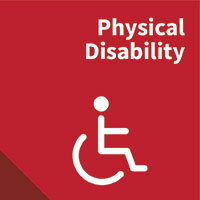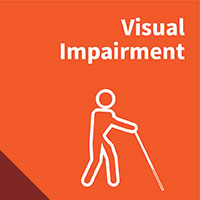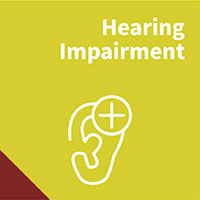


The definition of students with SEN which we adopt refers to those students who have significantly greater difficulty in learning than the majority of students. It is adopted with reference to the following SEN types as classified in DSM-5:
*Despite the fact that color blindness is not regarded as a special educational need in Hong Kong (Education Bureau, 2018), we consider colour blindness as a type of visual impairment, comply with the principle of reaching out to the last, the least and the lost (3L) who are under-served by the traditional tertiary education system.
Operation Guide on the Whole School Approach to Integrated Education
Special Education Resource Centre
PD refers to the disability caused by diseases of central and peripheral neurological systems, traumas or other congenital diseases of the musculoskeletal systems, which lead to hindrance or limitations in one or more aspects in daily living. In Hong Kong, physical disabilities mainly include the following categories: cerebral palsy, spina bifida, spinal muscular atrophy, muscular dystrophy, amputation, osteogenesis imperfecta and juvenile idiopathic arthritis.
Source:https://www.edb.gov.hk/en/edu-system/special/resources/serc/index.html
VI refers to the vision of the better eye which, even with eyeglasses or corrective surgery, cannot be corrected to the normal level. Ophthalmologists will classify an individual as having mild low vision, moderate low vision, severe low vision or total blindness according to his/her visual acuity, visual field and other contributing factors.
A disorder in any part of the auditory system will affect the hearing ability, thus affecting the speech and communication abilities. A student with hearing thresholds higher than 25dB can be regarded as having HI. The severity of HI is categorized into five different degrees of hearing threshold (measured in dB):
Source: https://www.edb.gov.hk/en/edu-system/special/resources/serc/index.html
Language is the building block of knowledge and an important tool for thinking and communication. School-aged students with SLI cannot communicate with others effectively. Their academic performance, emotions and social development will also be affected. The common types of SLI amongst school-aged students are subdivided into four major categories:
Source: https://www.edb.gov.hk/en/edu-system/special/resources/serc/index.html
SpLD in reading and writing, also known as dyslexia, is the most common type of SpLD. Children with SpLD in reading and writing, despite having normal intelligence and formal learning experiences, are unable to read, spell and dictate words accurately and fluently. Such conditions are severe and persistent. Generally speaking, they have poorer literacy skills and weaker cognitive abilities in relation to reading and writing.
Source: https://www.edb.gov.hk/en/edu-system/special/resources/serc/index.html
ASD is a congenital developmental disorder caused by abnormalities in the functioning of the brain. Although the symptoms may vary from person to person, all individuals with autism mainly have difficulties in the following three aspects:
Source: https://www.edb.gov.hk/en/edu-system/special/resources/serc/index.html
AD/HD refers to a disorder affecting students’ attention span and impulse control, causing hyperactivity and impulsivity, which make these students behave significantly different from those of their age without AD/HD. Such disorders hinder their learning progress and affect their social and family lives. Common symptoms include the followings:
Source: https://www.edb.gov.hk/en/edu-system/special/resources/serc/index.html
Common mental illnesses include Depressive Disorder, Anxiety Disorder, Schizophrenia, Bipolar disorder, Panic Disorder and so on.
Students with Chronic medical illness, Acquired brain injury and those with more than one type of disabilities are likely to seek help for support services.